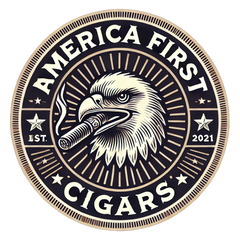The History of American Cigar Making
The History of American Cigar Making: From Seed to Smoke
The rich history of American cigar making is a tale of passion, craftsmanship, and cultural evolution. From the early days of tobacco cultivation to the sophisticated production processes of today, American cigars have become a symbol of quality and tradition. This blog post explores the journey of American cigar making, tracing its roots from seed to smoke.
Early Beginnings of Tobacco in America
Tobacco was first introduced to Europe by Christopher Columbus, who encountered it during his voyages to the New World. Native Americans had been cultivating and using tobacco for centuries, primarily for ceremonial purposes. The Spanish and Portuguese quickly recognized the value of this crop, and it wasn't long before tobacco farming spread throughout the Americas.

The Rise of the American Cigar Industry
The American cigar industry began to take shape in the early 19th century, with the first cigar factories opening in cities like New York, Tampa, and Key West. Immigrants from Cuba and Europe brought their knowledge and expertise, significantly contributing to the growth of the industry.

Key Moments in American Cigar History
-
The Cuban Influence
- Cuban immigrants played a pivotal role in shaping the American cigar industry. They brought with them not only the seeds of the famed Cuban tobacco but also the techniques and traditions of cigar making.
-
The Civil War Era
- During the Civil War, the demand for cigars surged as soldiers sought comfort in smoking. This period saw a significant increase in cigar production and consumption in the United States.
-
The Golden Age of Cigars
- The late 19th and early 20th centuries are often referred to as the "Golden Age of Cigars." This era was marked by innovation and expansion, with many iconic brands being established.

The Craftsmanship of Cigar Making
Cigar making is a meticulous process that requires skill and precision. From selecting the right seeds to rolling the perfect cigar, every step is crucial.
-
Seed Selection and Cultivation
- The journey begins with selecting high-quality seeds. Tobacco is typically grown in regions with rich, fertile soil and a favorable climate. American states like Connecticut, Kentucky, and Virginia are known for their excellent tobacco crops.

-
Harvesting and Curing
- Once the tobacco leaves are mature, they are harvested and cured. Curing is a critical process that involves drying the leaves to develop their flavor and aroma. There are several methods of curing, including air curing, flue curing, and sun curing.

-
Fermentation
- After curing, the leaves undergo fermentation. This process helps to reduce the tobacco's harshness and enhances its flavor profile. The leaves are stacked in large piles, where natural chemical reactions take place.

-
Aging
- Aged tobacco is prized for its smooth, rich flavor. Leaves are aged for several months or even years to achieve the desired characteristics. During this time, the leaves are monitored and rotated to ensure even aging.

-
Blending and Rolling
- Master blenders create unique cigar blends by combining different types of tobacco. This is where the artistry of cigar making truly shines. The leaves are then rolled into cigars by skilled artisans, a process that requires precision and expertise.

Modern Innovations and Challenges
Today, the American cigar industry faces both opportunities and challenges. Advances in technology have improved production methods, but regulations and competition continue to shape the market.
-
Technological Advances
- Modern technology has streamlined many aspects of cigar production, from cultivation to packaging. Automated machines can perform tasks that were once done by hand, increasing efficiency and consistency.

-
Regulatory Challenges
- The cigar industry is subject to various regulations aimed at controlling tobacco use. These regulations impact everything from advertising to packaging, posing challenges for manufacturers.

-
Sustainability Efforts
- As environmental concerns grow, many cigar makers are adopting sustainable practices. This includes using eco-friendly packaging, reducing waste, and supporting fair trade practices.
Image Placeholder: Image of

The Cultural Impact of Cigars in America
Cigars have left an indelible mark on American culture. They are associated with celebrations, relaxation, and social gatherings. From Hollywood movies to political campaigns, cigars have been a symbol of status and sophistication.
Conclusion
The history of American cigar making is a rich tapestry of tradition, innovation, and cultural significance. From the early days of tobacco cultivation to the modern era of premium cigars, the journey from seed to smoke is a testament to the dedication and craftsmanship of cigar makers. As the industry continues to evolve, the passion for creating exceptional cigars remains at its core, ensuring that this timeless tradition will endure for generations to come.

